We can offer a custom forward bulkhead position in all our kayaks. A custom bulkhead can be a great customisation making the kayak that little more personalised. It can have the effect of reducing cockpit volume for easy emptying and maximising hatch volume for storage and/or providing a comfortable connected foot plate rather than the standard adjustable pegs.
There are two main reasons for having a custom bulkhead. Before ordering it is important to read this guide and double check all measurements. It can be difficult to move a bulkhead so accuracy in ordering is vital.
Step 1 – Decide why you are requesting a custom bulkhead position.
A.
To have a kayak with a bespoke bulkhead to be used as a footplate with no adjustable footrests fitted.
This option is not available on plastic models.
Pros
- Easy to get in and out of the kayak without adjusting foot peg position.
- Increased comfort and the ability to alter foot position across the entire foot plate.
- Exactly the right amount of cockpit volume and maximised front hatch volume, reducing emptying during rescues and increasing storage capacity.
Cons
- As there will be no quick adjustment it may not be easy for other paddlers to use your kayak. Although footpegs can be retrofitted the reduced cockpit size may affect resale.
B.
You still want footrests, but you are shorter or taller than average so wish to alter the bulkhead position reducing or increasing cockpit length.
Pros
- Exactly the right amount of cockpit volume and maximised front hatch volume, reducing emptying during rescues and increasing storage capacity.
Cons
- Reduced cockpit size may affect resale.
Step 2. Now you have decided please refer to the ‘Guide A – Without Footrests’ or ‘Guide B – With Footrests’.
Guide A – Without Footrests
Now you need to get some accurate measurements to add to your order so that we can get it right when making your new kayak. Please read this guide thoroughly.
We can place bulkheads with a 12mm tolerance. This means we can guarantee it will be in the position you specify +/- 12mm (1/2”).
Once we have fitted the bulkhead, we fit a 50mm (2”) piece of closed cell foam over the bulkhead. This serves 2 purposes; it spreads the load during paddling across the bulkhead and offers the possibility of removing up to 35mm (1.4”) of foam to adjust the foot position.
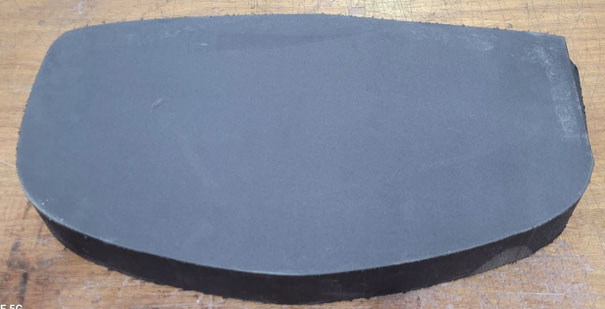
Measuring
There are different ways to measure a custom bulkhead position. They are laid out below listed from the most accurate to the least.
Option 1 – Use a kayak the same as the one you hope to buy
By reaching out to your local dealer or finding a fellow paddler you can usually find a kayak to sit in and measure.
Once you have found the kayak follow these steps.
- Check the seat is in the standard position. The Allen bolts should look like this if standard. If the seat has been moved forward, you will need to add 12mm (1/2”) to the measurement. If it has been moved back, we will need to deduct 12mm (1/2”).
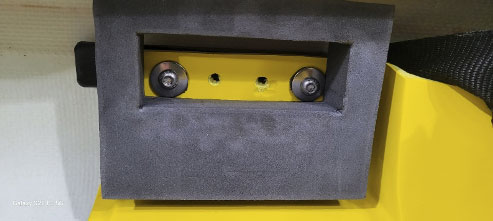
- Ideally wearing your kayaking footwear. Sit in the kayak and adjust the foot pegs so that you are in a comfortable position.
- Now measure from the front of the cockpit to the foot peg on both sides. See the photographs below indicating the positions.
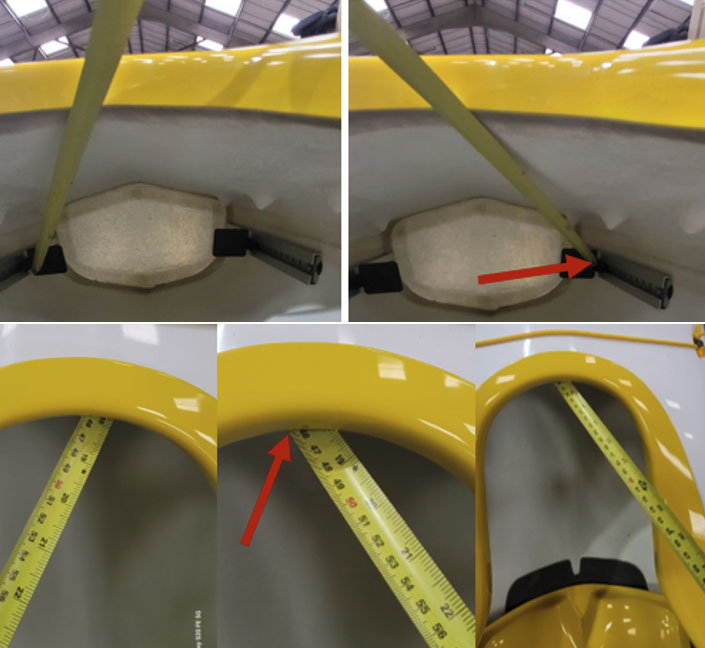
- It is possible these measurements are different; people are not symmetrical. Record the measurements on the sheet provided. Please use the longest measurement for the calculations.
- Using the ‘Bulkhead Calculation Sheet A’ work out the bulkhead position.
Bulkhead Calculation Sheet A
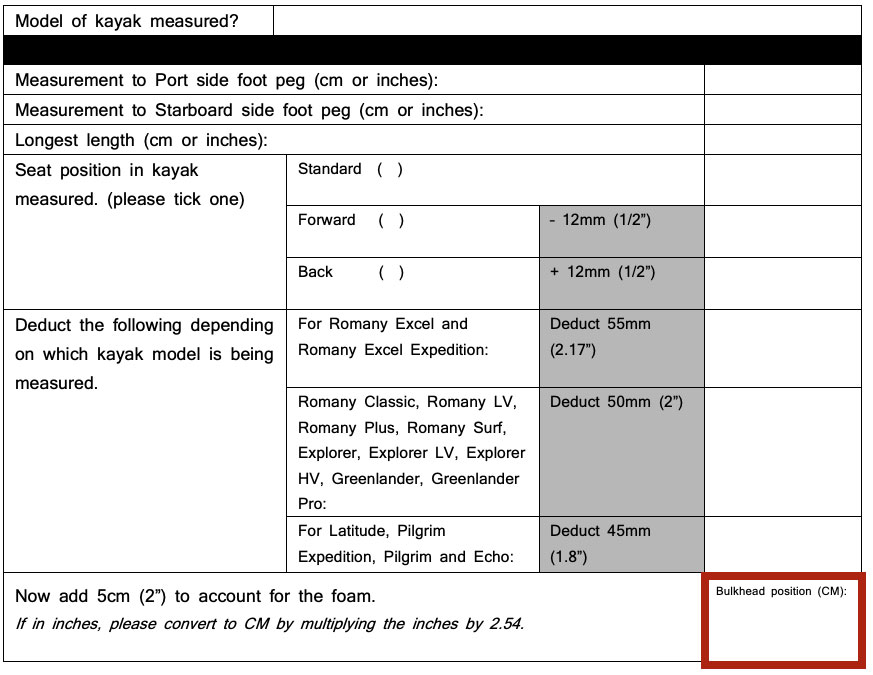
Option 2 – We estimate bulkhead position based on your inside seam measurement.
For this option all we require is your inside seam measurement, however, please note that this option is less accurate than the one above for a couple of reasons.
- Inside leg measurements are not always accurate.
- Different kayak models encourage different seating positions and therefore can increase or shorten relative leg length.
How to measure your inside seam?
It is useful to have a helper for this job.
- Stand up straight with your feet in a natural position (see diagram below).
- Hold one end of the measuring tape high on the inside of your crotch.
- Ask a second person to measure to your ankle bone down the inside of your leg.
- Repeat on both legs and send us the longest one.
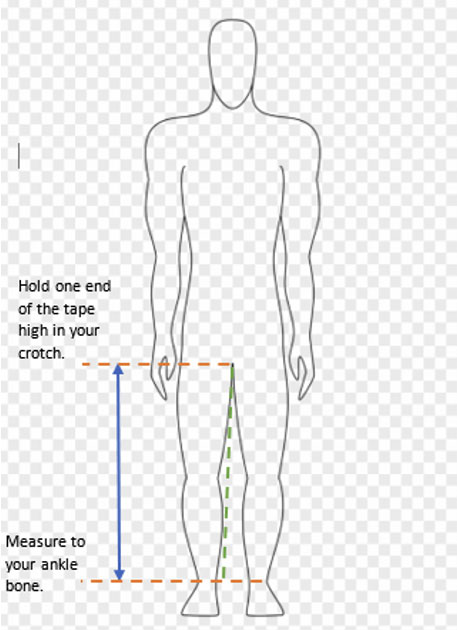
We use the following table to convert leg length to bulkhead positions (without footrests).
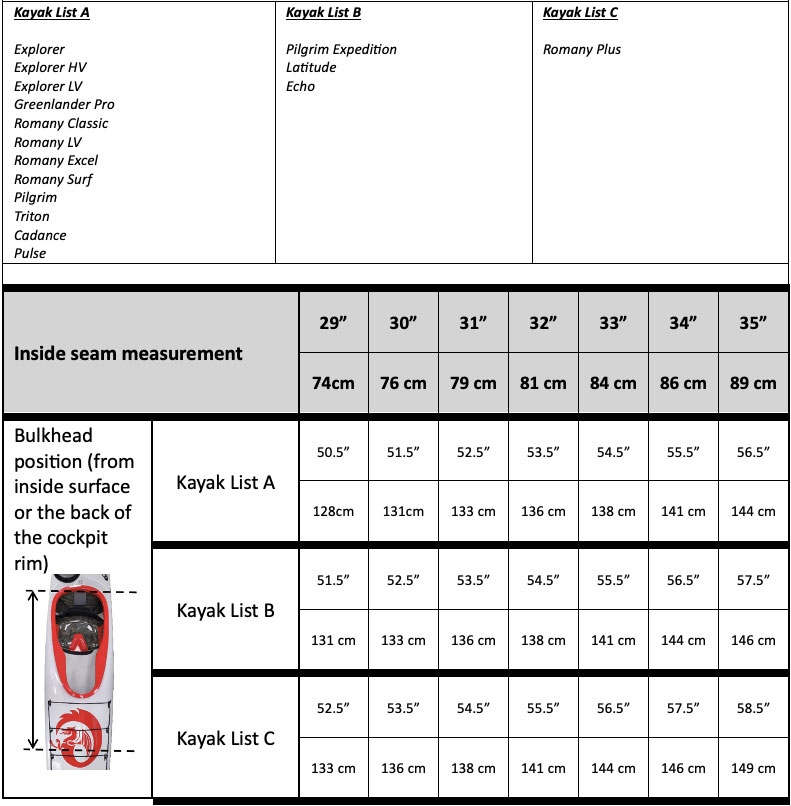
Guide B Guide – With Footrests
Now you need to get some accurate measurements to add to your order so that we can get it right when making your new kayak. Please read this guide thoroughly.
We can place bulkheads with a 12mm tolerance. This means we can guarantee it will be in the position you specify +/- 12mm (1/2”).
Once you have established your ideal foot peg position, we will add a minimum of 9cm (3.5”) to ensure there is space to fit foot pegs and rails. Please note that this will mean you are on the last setting for the footpegs. If you want more flexibility you need to add to this.
Measuring
There are different ways to measure a custom bulkhead position they are laid out below listed from the most accurate to the least.
Option 1 – Use a kayak the same as the one you hope to buy
By reaching out to your local dealer or finding a fellow paddler you can usually find a kayak to sit in and measure.
Once you have found the kayak follow these steps.
- Check the seat is in the standard position. The Allen bolts should look like this if standard. If the seat has been moved forward, you will need to add 12mm (1/2”) to the measurement. If it has been moved back, we will need to deduct 12mm (1/2”).

- Ideally wearing your kayaking footwear. Sit in the kayak and adjust the foot pegs so that you are in a comfortable position.
- Now measure from the front of the cockpit to the foot peg on both sides. See the photographs below indicating the positions.
 .
.- It is possible these measurements are different; people are not symmetrical. Record the measurements on the sheet provided. Please use the longest measurement for the calculations.
- Using the ‘Bulkhead Calculation Sheet B’ work out the bulkhead position.
Bulkhead Calculation Sheet B
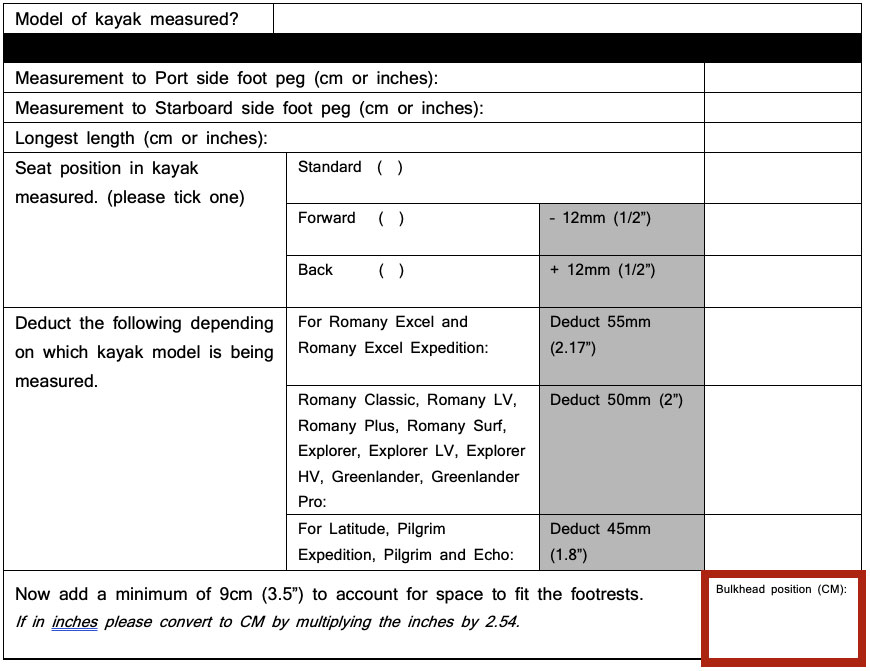
Option 2 – We estimate bulkhead position based on your inside leg measurement.
Please note that this option is less accurate than the one above for a couple of reasons.
- Inside leg measurements are not always accurate.
- Different kayak models encourage different seating positions and therefore can increase or shorten relative leg length.
How to measure your inside seam?
It is useful to have a helper for this job.
- Stand up straight with your feet in a natural position (see diagram below).
- Hold one end of the measuring tape high on the inside of your crotch.
- Ask a second person to measure to your ankle bone down the inside of your leg.
- Repeat on both legs and send us the longest one.

We use the following table to convert leg length to bulkhead positions (with footrests).
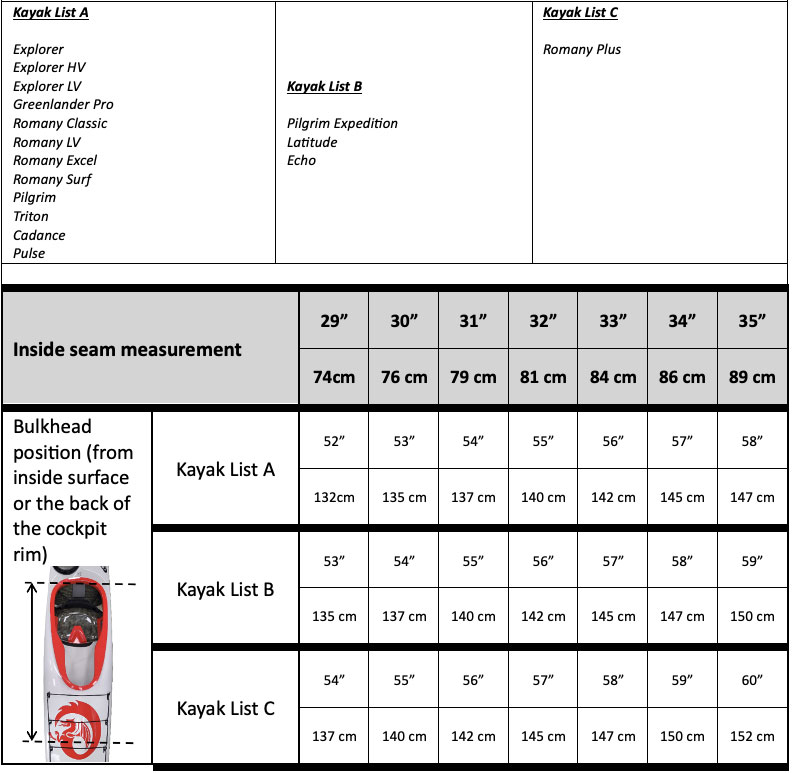




Kayak order form | Paddle enquiry form
Contact us | +44 (0) 1407 765550